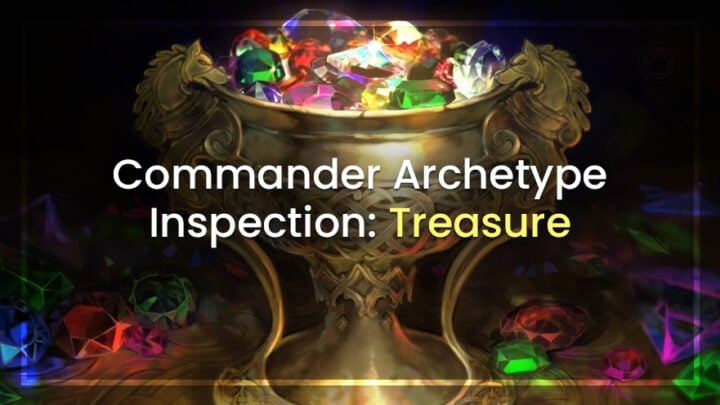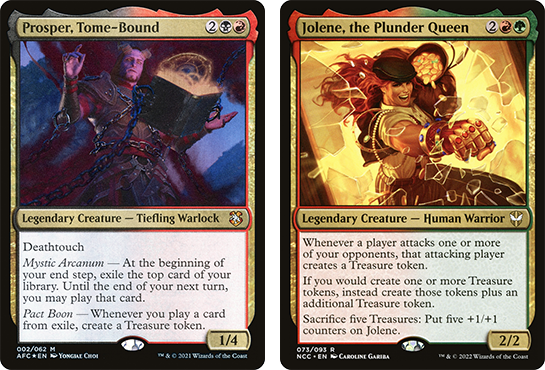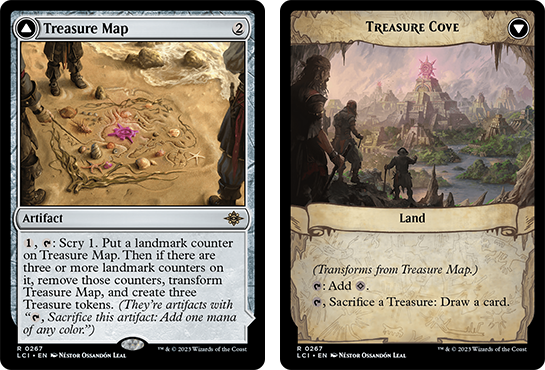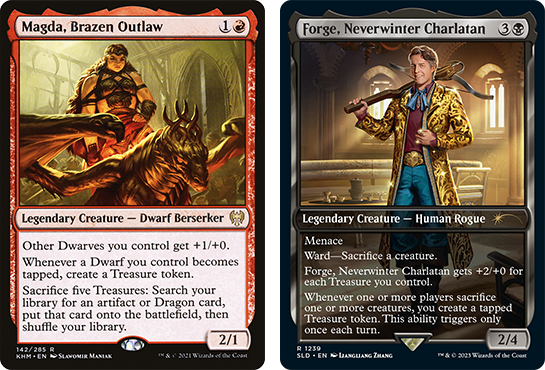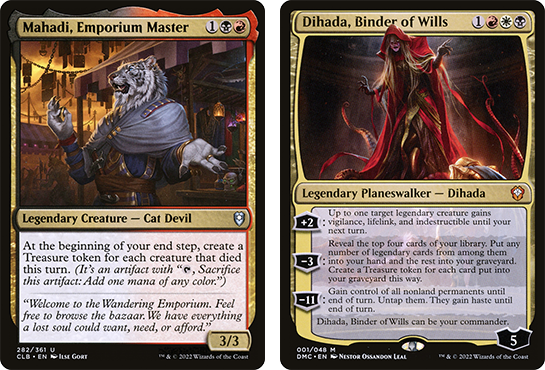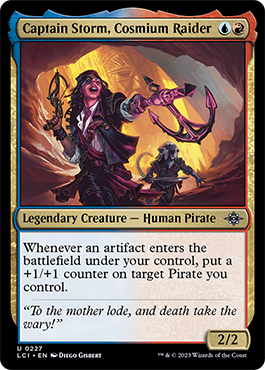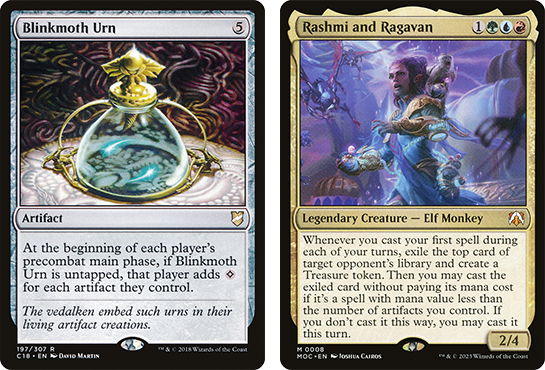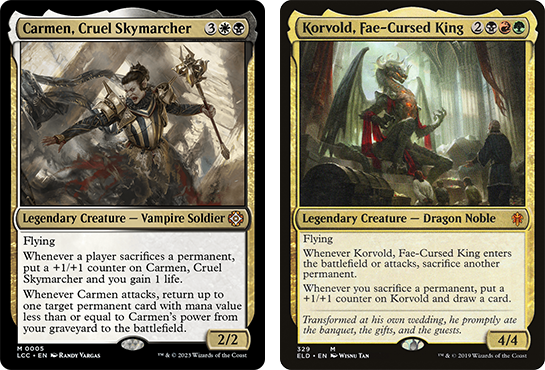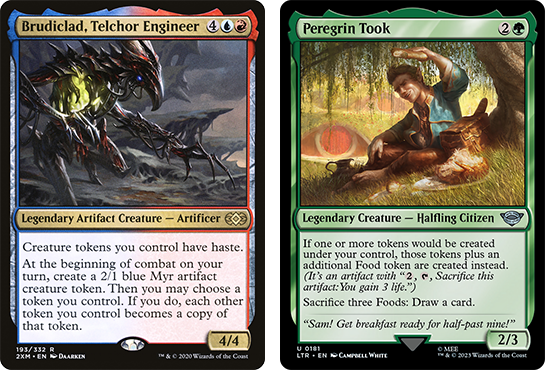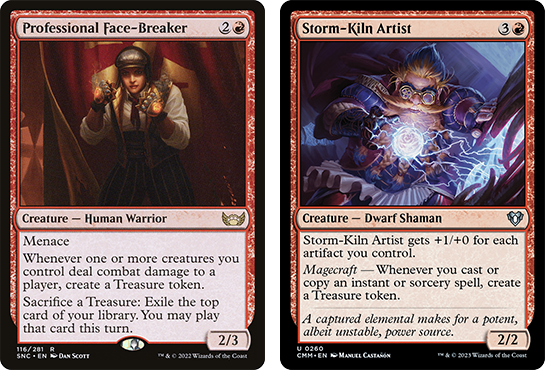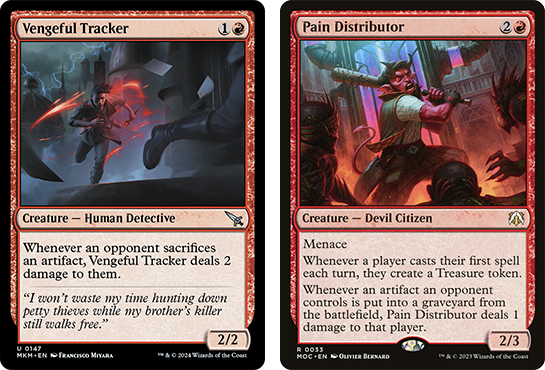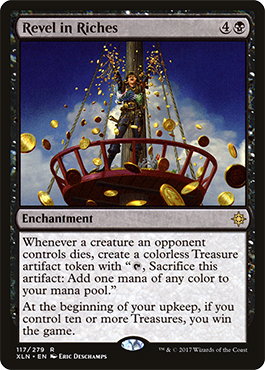Magic has been around for long enough to spin off hundreds of unique mechanics, each with its own unique advantages, dedicated support cards and memorable payoffs. But when you throw them all together in the grand melting pot that is Commander, a few mechanics clearly stand out from the pack. They offer versatile deck building options, consistent performance in different areas of the game and power ceilings which border on unbeatable. Today we’re talking about Treasure decks in Commander.
A GOLDEN DAWN
Treasure first appeared in Ixalan, a set in which pirates and other avaricious factions raced to claim a lost golden city. This was not the first appearance of one-use mana tokens, however. King Macar and Gild from Born of the Gods introduced the Gold token as a way to represent his cursed touch. Tezzeret the Schemer from Aether Revolt created Etherium Cells, which added a tap cost to the mana ability to make them less broken with the set’s Improvise mechanic. But “Etherium Cell” is a tough name/concept to re-use across Magic’s various planes, and so the more generic “Treasure” quickly took its place.
These early treasure cards offered (almost) no opportunity to build around treasure as a distinct archetype with dedicated support cards. Rather, treasure was designed as a utility mechanic which could be plugged in to bolster existing decks in some unique ways.
The most immediate quality-of-life benefit was making color fixing readily available in any deck, without the need for pricey rainbow lands. Treasure is also an easy way to produce colors of mana outside your commander’s identity, which is highly relevant in “steal your stuff” decks and other niche strategies.
Treasure also gives players another way to break the mana curve – once. Single-use mana ramp isn’t as big a deal in Commander as in 60-card constructed, where even marginal tempo advantages can decide a match. But it can still do a lot of work if your gameplan is bottlenecked behind a single high-cost play: perhaps an expensive win-condition commander, or just Ad Nauseam plus counterspell mana.
By unlocking the otherwise tight limitations of mana income, treasure could maximize the potential and consistency of your deck without you needing to make it your entire identity.
NOW, MAKE IT YOUR ENTIRE IDENTITY
Whatever fair and measured intentions the Ixalan designers may have had, their new golden child almost immediately got out of control. Making treasure a defined token type left the door open, not just for its adoption as an evergreen mechanic, but for other cards to reference it in rules text and create specific treasure synergies or payoffs. Getting specially rewarded for using treasure is like getting paid to eat ice cream all day; we would probably be indulging in some anyway, but now we can go absolutely hog wild!

Any no-added-cost ability which increases the number of treasures we make, or grants us extra benefits when they’re used is absolute top of the heap: adding free value to a transaction which, in most cases, we were already profiting from. Xorn, Goldspan Dragon, Crime Novelist, Rain of Riches, Kalain, Reclusive Painter, and the new Mastermind Plum are all amazing once you’re committed to generating and using treasure every turn.
Of course it really helps establish that identity if you can fit one of these payoffs in the Command Zone, and especially if it can use treasures to more directly win the game. Magda, Brazen Outlaw, Captain Lannery Storm, and Forge, Neverwinter Charlatan are great picks, while Jolene, the Plunder Queen adds some color variety to the lineup.
I should also acknowledge Revel in Riches in this section. While you can’t put it in the command zone, commanders like Ghen, Arcanum Weaver or Go-Shintai of Life’s Origin can make it (or Mechanized Production) a reliable treasure-themed win condition.
Once you’ve slotted in these priceless payoff cards, our next priority is generating enough treasure tokens so we can see their benefits stack up. As is often the case for Commander, we need to consider economies of scale here. Spells which generate individual treasures can be a nice bonus and help advertise our theme, but they can really only add a drop to the ocean of tokens we’re aiming for! What we really need are one or two-card engines which can spit out hoards of treasure every turn, whether through easily-repeated triggers or sometimes a single huge lump sum.
A-list treasure generation is another effect important enough to potentially play in the Command Zone if you like one of the eligible legends. Even type-specific options like Ganax, Astral Hunter or Malcolm, Keen-Eyed Navigator have potential: it helps that many Dragon and Pirate cards have treasure-related effects already.
TREASURE RULES EVERYTHING AROUND ME
There’s no reason we should limit our treasure deck to only cards that have the word “treasure” on them. Being easily created and naturally providing fuel for further plays, massed treasure tokens are incredible for enabling more generic synergies around artifacts, tokens, permanents entering and leaving play, and sacrificing.
I intentionally skirted around treasure when discussing Sacrifice decks for this series, because I wanted to show that archetype is powerful regardless of what fuel it’s burning. But it should be obvious how much more explosive you can be when you can make sacrifices which are mana-positive and require no external sac outlet!
The treasure glow-up is no less pronounced for the other archetypes I mentioned. The design choices which make treasure tokens workable as a frictionless, self-justifying source of bonus mana mean they’re completely broken when they can provide some additional layer of benefit on top of that.
This is where our deckbuilding options really open up. It’s probably best to choose just one of these treasure-adjacent themes to incorporate, as they each encourage us to play in different ways.
Artifact synergies tend to reward sitting on piles of unused treasure: to discount spells with Chiss-Goria, Forge Tyrant and Saheeli, the Gifted; to increase mana production from Karn, Legacy Reforged and Urza, Lord High Artificer; or just to boost the combat potential of Construct tokens, Cranial Plating, Master of Etherium and Akiri, Line-Slinger.
Sacrifice synergies obviously take us in the complete opposite direction. The poster-child for this kind of treasure deck is Korvold, Fae-Cursed King, who you may recall from our earlier dive into sacrifice decks. That archetype lives to pump out cheap fodder permanents as efficiently as possible, and there’s not many more efficient than treasure tokens – especially since they eliminate the need for a sacrifice outlet!
Token synergies must first be read with care – some of them don’t really work well with non-creature token types. Those that do often incentivise spreading our treasure generation across many individual instances to get more triggers, or using our treasures in non-standard ways to create other kinds of token. Some cards support artifact tokens specifically, which treasure is of course able to take advantage of.
GETTING BACK TO THE MANA
So far, everything we’ve talked about is focused on leveraging treasure as a type of token permanent. It’s an easy way to build something that is obviously, undeniably a “Treasure Deck”, because it features tons of cards which specifically care about treasure tokens existing, rather than what you use them for. But even if your deck values treasure exclusively as a mana source, it’s still an extremely potent theme to build around!
Assuming treasure plays a similar role to cards like Dark Ritual, we can see that the most natural home for that kind of burst mana generation is combo. You can easily adapt your treasure package to fuel big, non-deterministic turns in a shell like Storm or Krark-Clan Ironworks where you would normally play traditional rituals and mana rocks. If your table has the competitive mindset to embrace these powerful combos, their explosiveness makes them very much at home in the Commander format.
However, one of the most unique benefits of treasure is that you don’t need to force huge one-turn-kills with it – because the mana it generates won’t vanish at the end of steps, phases or turns. This makes a difference more often than you might think: enabling the “War Economy” deck archetype I explored in a recent article, extra-turns decks, and anything which tries to partially or fully combo on opposing turns.
Even just the freedom to call off a combo attempt in the face of interaction or fizzling and conserve any remaining mana for a future re-attempt is a huge shift in the paradigm for these archetypes. When you remember the generic benefits these tokens offer on top of that, maybe we should instead be asking: is there a good reason that you shouldn’t be building around treasure?
THE PRICE OF SUCCESS
Now that we’ve amassed a deeper pool of supporting cards, treasure clearly stands out as one of the most powerful, desirable and flexible mechanics in Magic history.
It’s too late for Wizards to put this evil back in the Pyxis of Pandemonium and pretend it didn’t happen, but they do seem determined to create a growing arsenal of anti-treasure tools that might curtail its dominance. The Commander community was already engaged in a group project to dig up older treasure-punishing effects before these new ones reached the printers, with posts about Magnetic Mine and Viridian Revel generating a lot of positive buzz.
I see this as a positive shift in the general attitude towards “hate cards” in casual Commander. In the past it was sometimes considered rude and antagonistic to run narrow effects like Rest in Peace or Null Rod, since that one card could shut down one player’s entire deck. But since treasure has become such an omnipresent, homogenizing force in the metagame, everyone seems to agree that there needs to be a certain amount of passive anti-treasure pushback in our decks to give other mechanics a fighting chance!
Still, if you’ve read this far in the piece because you’re fired up about building a treasure-fueled red-black combo pile, I wouldn’t worry too much about an uptick in the playrate of Vengeful Tracker. Even the most powerful hate cards won’t automatically show up in every opening hand – and with the limitless potential of treasure fueling you, your opponents probably won’t get that many more turns to find them.

Tom’s fate was sealed in 7th grade when his friend lent him a pile of commons to play Magic. He quickly picked up Boros and Orzhov decks in Ravnica block and has remained a staunch white magician ever since. A fan of all Constructed formats, he enjoys studying the history of the tournament meta. He specializes in midrange decks, especially Death & Taxes and Martyr Proc. One day, he swears he will win an MCQ with Evershrike. Ask him how at @AWanderingBard, or watch him stream Magic at twitch.tv/TheWanderingBard.

